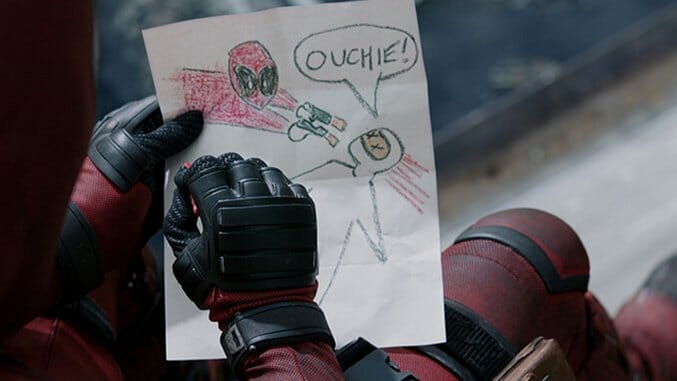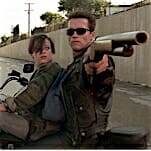Deadpool

You can see almost immediately that Tim Miller’s adaptation of Fabian Nicieza and Rob Liefield’s Deadpool comic doesn’t have the full might of 20th Century Fox behind it. Its relatively low budget ($58 million, which is nothing on, say, Age of Ultron’s $280M) is obvious from the fairly lightweight supporting cast, limited locations and reined-in spectacle. Even though Miller’s film ends with an explosive showdown, it never matches the scale of your typical superhero blockbuster. This might soon change.
Years in the making, Deadpool has long presented a marketing conundrum for the studio. It’s a superhero movie set in the family-friendly-ish X-Men universe, starring a foul-mouthed, ruthless and self-referential antihero. Get it wrong, and Deadpool could be a spectacular failure, but get it right and it could begin a whole new chapter for superhero movies. They got it right, at least as far as the studio is concerned: Set for huge box office returns, Deadpool is so strong and has such appeal it should bust the genre beyond the PG-13 barrier and lead to a glut of major comic book movies made just for adults.
Deadpool moves always at a breakneck pace, hungrily cramming as much as it can into its 108-minute running time, as though Miller and producer-star Ryan Reynolds were in the decade-plus of pre-production just storing up ideas and gags. In fact, Deadpool introduces its title character with a wedgie, as he and a car full of bloody corpses fly through the air above a New York highway. From there the movie jumps in and out of flashback to tell how Wade Wilson (Reynolds) met love of his life Vanessa (Morena Baccarin) and got turned into a disfigured mutant by Ed Skrein’s sneering Ajax, putting the Merc With a Mouth on a super-powered collision course with his maker.
-

-

-

-

- Curated Home Page Articles By Test Admin October 21, 2025 | 3:10pm
-

- Curated Home Page Articles By Test Admin October 21, 2025 | 2:57pm
- Urls By Test Admin October 21, 2025 | 2:57pm
- Curated Home Page Articles By Test Admin October 21, 2025 | 2:55pm
-

-

-

-

-

-

-

-

-

-

-

-

-

-

-

-

-

-

-

-

-

-

-

-

-

-

-

-

-

-

-




































